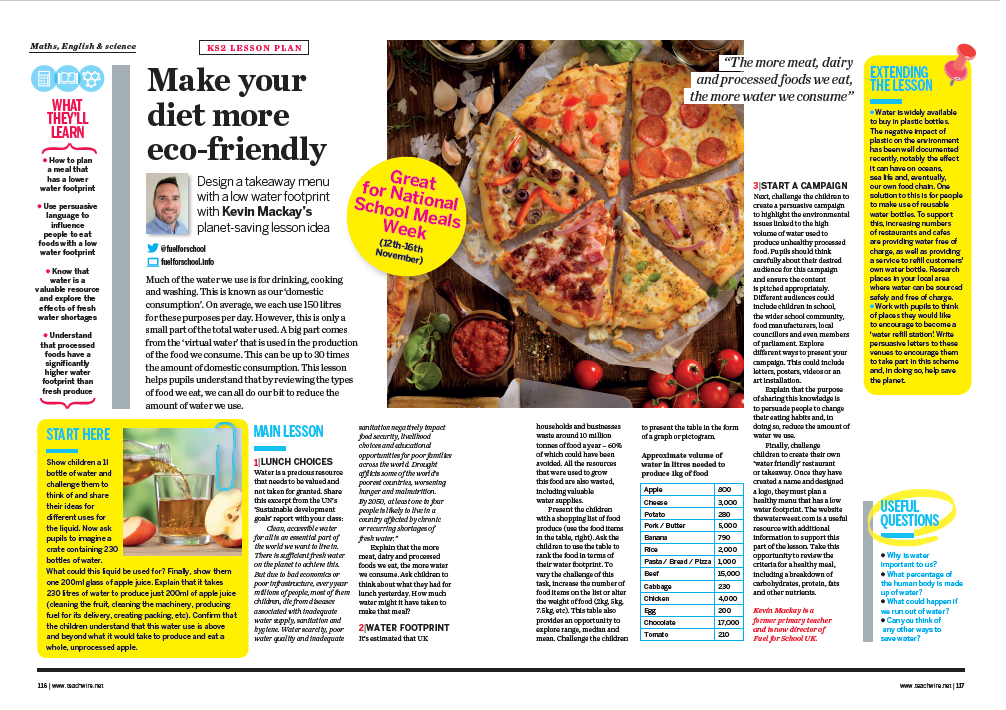Much of the water we use is for drinking, cooking and washing. This is known as our ‘domestic consumption’. On average, we each use 150 litres for these purposes per day. However, this is only a small part of the total water used.
A big part comes from the ‘virtual water’ that is used in the production of the food we consume. This can be up to 30 times the amount of domestic consumption. This lesson helps pupils understand that by reviewing the types of food we eat, we can all do our bit to reduce the amount of water we use.
What they’ll learn
- How to plan a meal that has a lower water footprint
- Use persuasive language to influence people to eat foods with a low water footprint
- Know that water is a valuable resource and explore the effects of fresh water shortages
- Understand that processed foods have a significantly higher water footprint than fresh produce
 Kevin Mackay is a former primary teacher and is now director of Fuel for School UK. Find out more at fuelforschool.info and on Twitter at @fuelforschool.
Kevin Mackay is a former primary teacher and is now director of Fuel for School UK. Find out more at fuelforschool.info and on Twitter at @fuelforschool.













